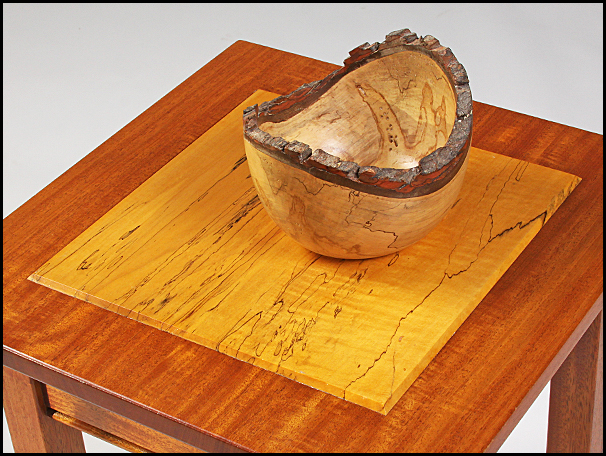
This woodworker has worked with spalted maple, but wonders about what to do with spalted cherry, especially the mushy spots on the wood.
Michael Dresdner: Assuming the spots aren’t too mushy, you can pot them with a wood hardener designed to soak in and stabilize rotted wood. They come in two versions a one package pour on and a two part thin epoxy with names like “Woodrot” and the like. In my opinion, the epoxy is the better of the two. You can get some from System Three here in Seattle they have ads in most of the woodworking magazines. Once stabilized, you can treat it as any other wood. The epoxy will affect the way it takes stains, but most folks don’t stain spalted wood. It will not affect finish adhesion, and rarely affects glue adhesion.
Ellis Walentine: The mushy spots of any spalted wood are the areas where the spalting has proceeded too far. The best treatment in some cases may be to scrap the wood. If you can’t afford (or bring yourself) to do that, there’s a type of epoxy that is very thin and foul-smelling designed to harden up these soft fibers (See Michael’s answer above).
Otherwise, in situations where the mushiness is not a major functional issue, you can just proceed with sanding and finishing, and use it without trying to harden up those fibers. Avoid pure oil and Danish oil finishes, because they will penetrate deeply into the soft spots and darken them considerably. A coat of wax is the least apt to discolor the soft spots, but if you simply must build a film finish, give the wood a couple thin coats of blond shellac to seal the fibers.
Rick White: Old boat builders deal with mushy wood a lot, so you can often go down to the marina and quiz them. I think they use a solvent from Minwax that soaks into the wood and gives it some added strength.





